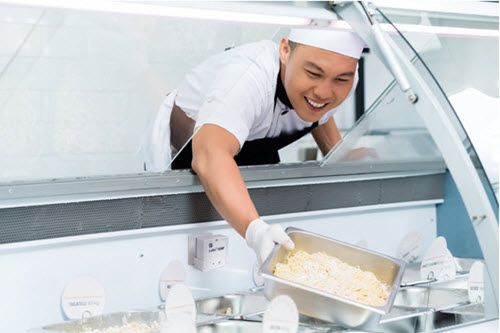Restaurants Get Smart About Temp Monitoring
Posted on 10th Sep 2021
 Along with the many day-to-day concerns competing for attention from restaurant operators, keeping pace with new technology—and keeping food safe and avoiding costly health code violations—rise to the top.
Along with the many day-to-day concerns competing for attention from restaurant operators, keeping pace with new technology—and keeping food safe and avoiding costly health code violations—rise to the top.
A major challenge for operators is efficiently and reliably monitoring food from refrigerator to table. For example, monitoring food temperatures can be tedious and sometimes ineffective as staff members manually check and record temperatures in a handwritten log. Improper food temperature is consistently cited as one of the most common food safety violations by the U.S. Food & Drug Administration and addressing food safety requires a rigorous temperature monitoring system.
Implementing more effective food safety systems and driving greater efficiencies is one way to bring more peace of mind to operators. Most successful restaurants are now implementing smart strategies to maintain food safety, including more efficient automated systems, such as the DayMark Temp Monitoring Solution, powered by JRI.
Utilizing elements such as wireless sensors, internet connectivity, and web-based dashboards, these systems collect data to help operators increase the visibility and control of equipment and maintain product freshness. The data can then be managed on a web platform using a PC, a tablet, or even a smartphone.
Many systems feature even greater advantages. The DayMark system, for example, utilizes the available, more advanced LoRa technology, which further increases efficiencies and improves practices by allowing for better communication between system components, including through concrete or steel walls, or within a heavily insulated, stainless steel deep freezer. LoRa-based wireless temperature sensors can reliably transmit its signal using lower frequencies that are more successful at transmitting through heavy materials. This type of automated and wireless food safety system provides better results, safer food, and peace of mind that restaurant operations are shielded against food safety disasters.
Being able to monitor the temperature data of food in real time as it moves through the kitchen to address potential food safety issues, such as equipment downtime or refrigerant leaks, also reduces maintenance costs and results in improved energy efficiency. Automated systems can issue alerts if a problem is recognized in order to help maintain the safety of temperature-controlled products.
Investing in a wirelessly connected kitchen that maintains food safety and freshness helps customers get the most out of their restaurant experience and keeps them coming back.
Article originally appeared on the Restaurant Business website.


